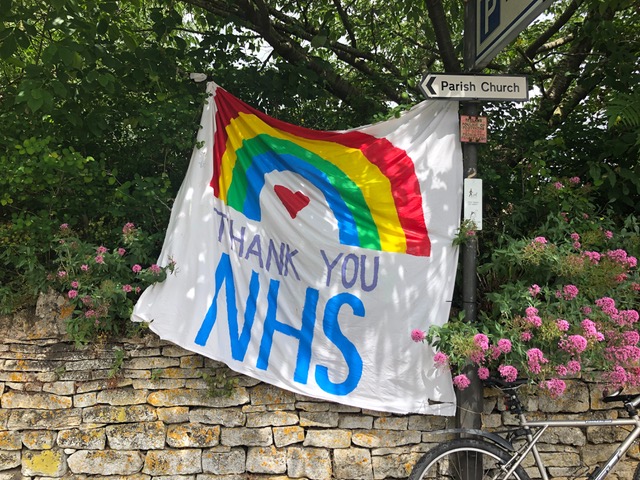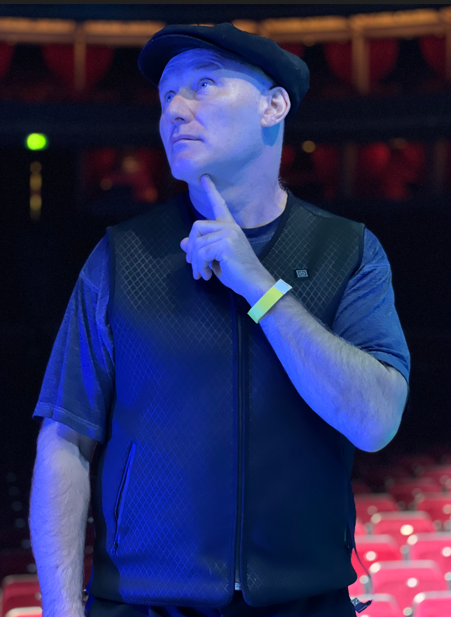By Caitlin Parr
The symbol of a rainbow is one of hope, belief and resilience – three things that the UK and our NHS really do need at the moment to get through the Coronavirus pandemic. As the UK went into lockdown, posters and flags in rainbow colours appeared in windows all across the country.
Though a symbol cannot end the pandemic or provide the invaluable funding that the NHS needs to get through these detrimental financial times, it does provide hope and reassurance. As an emblem of solidarity with all of our key workers, the rainbow now represents support for those who worked relentless hours in this terrifying public health crisis.
Bright and colourful window displays appeared in homes, schools and businesses across the country; reassuring key workers that their community supports them and appreciates the sacrifices that they are making during these unprecedented times.
However, some of these displays inappropriately included the commercially rebranded pride flag – used now to make money in the pandemic without recognising how they were erasing such an important piece of history and cultural significance in doing so.
The History of the Pride Flag
You can identify a pride flag by it’s 6 horizontal stripes, as opposed to the traditional 7 coloured curve of a natural rainbow. It was created by queer American artist Gilbert Baker back in 1978. The horizontal striped design is said to have been inspired by the USA and France alike, as both Nations “owed their beginnings to a riot, a rebellion, or revolution” – similar to the LGBTQ+ community. Supposedly, Baker thought that “a gay nation should have a flag too, to proclaim its own idea of power“, so created the iconic 6-striped, colourful, flag.
Much like a rainbow, the pride flag represents hope and resilience; but also the diversity and inclusivity within the LGBTQ+ community and wider acceptance of the community too.
Using Pride for Profit
A wide range of NHS merchandise has now been created that sees the NHS’ iconic blue logo being placed on top of the pride flag. Not only does this placement erase the identity of the pride flag, but it also suggests to many that the NHS has commissioned this merchandise itself and is actively ignoring the importance of the pride symbol whilst doing so. Of course, we know that the NHS has a lot more to focus on at the moment than designing its own merchandise line during the pandemic – but there are a lot of people out there who are now capitalising off of this surge in demand to show materialistic support for our invaluable key workers.
It is not only disrespectful to the LGBTQ+ community for retailers to commodify the pride flag under a pandemic ÔÇÿrebrand’, but they also didn’t seem to know that it was the pride flag in the first place – especially considering a lot of retailers boast their support for pride month and stock pride related stock in the build up to pride events and celebrations. Did they intentionally re-brand the pride flag for profit, or did they genuinely not realise the significance of the flag? I think that the answer really does depend on the retailer and community, but it is insulting for the LGBTQ+ community nonetheless.
Yes, it is incredible to see homemade window displays thanking NHS staff and our country’s key workers in homes across the country. I can only imagine how much that must mean to key workers as they travel to work in these terrifying times.
Similarly, I do not know a single LGBTQ+ person who wants your traditional rainbows in these displays to be taken down, and it would be appalling if they did. However, pride flags that are already met with such controversy and disdain in these same communities during a typical year cannot now be carelessly displayed in the wrong context.
We do not own the rainbow – the beautiful, sexuality-less, weather phenomenon – but we do own the pride flag. It is a symbol of our history and fight for equality and inclusion. And nobody has the right to rebrand this heritage for their own capital gain when it suits their market’s trends.
Re-Appropriating and Re-Branding the Pride Flag
Some of the worst case of rebranding and erasing LGBTQ+ identities that I’ve seen under acts of commercialism have been packs of pride flags on online retailers such as Ebay and Amazon (with no NHS branding on at all) having their listing names changed to now be ÔÇÿNHS RAINBOW FLAG’.
A similar example of re-appropriating is a Plymouth bus line using their pride buses in a promotion of ÔÇÿnew’ NHS buses – though the rebrand was soon called out on social media.
What Does It Mean to Display a Pride Flag?
In my hometown alone, an unbelievable number of households have now proudly displayed pride flags on their fence posts with such ignorance. These same households are usually heard using the classic phrase, one which I’m sure every member of the LGBTQ+ community has heard at one stage or another, “I don’t mind the community, but why do they have to shove the flag in our face all of the time“.
This is the main concern of the pride flag now being used incorrectly as a symbol for the NHS. In their choice to display the Pride flag incorrectly, neighbourhoods that may not be as liberal or accepting as others are providing a false sense of security for any LGBTQ+ members in their community.
A perfect example of this contradiction is the experiences of Alex Hancock, who shared his story with the BBC’s LGBT Correspondent Ben Hunte. During the earlier stages of lockdown Alex Hancock told the BBC about the homophobic abuse he faced last year as he hung pride flags in his windows in celebration of 2019’s Manchester Pride event. His neighbours, who had previously given him death threats, were now proudly displaying the pride flag under the impression that it is a symbol in support of the National Health Service.
This behaviour is abhorrent, and is exactly why members of the LGBTQ+ community are worried when it comes to publicly displaying flags for pride events in the future. Though it will be interesting to see if there is any objection to this in the future, as there has been in previous years, now that the majority of people are comfortable with the symbol (even if that is for all of the wrong reasons).
There has been a call across social media by members of the LGBTQ+ community and allies for the pride flag and its history to be recognised as a separate symbol to the natural rainbow. Ever since, a huge backlash has ensued using the ever-popular and ridiculous argument that we are ÔÇÿsnowflakes’ who are once again getting upset about something deemed irrelevant.
We can only hope that at least one person has been educated about the significance of the pride flag from these online petitions and threads, as it is a history worth learning about and coming to accept.
The NHS and our key workers deserve every appropriate, rainbow-coloured, public display of support at this time. However, we cannot erase an entire community in doing so, especially whilst the journey to reclaiming the pride flag will have to start all over again now that the flag is recognised by all (those accepting but unaware and homophobic alike) as the mascot of the UK’s Coronavirus lockdown.
I’m proud of our keyworkers, I’m proud of the NHS and I’m proud of my community. Nevertheless, those three things, and the pride I show for them, do not have to overlap just because a capital market says they do.



